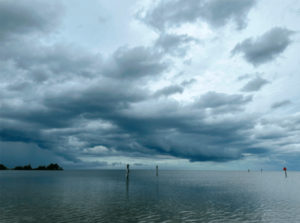As the calm and warm days of summer begin to fade, nature’s fury awakens with the arrival of Hurricane Idalia, the first hurricane of the year. With its powerful winds, torrential rains, and potential for destruction, Idalia serves as a stark reminder of the importance of preparedness for hurricane season. This article delves into the impact of Hurricane Idalia and emphasizes the significance of being ready for the next hurricane.
Hurricane Idalia: Unleashing Nature’s Fury
Hurricane Idalia made landfall on the coastal region early Tuesday morning, bringing with it a force to be reckoned with. The Category 3 hurricane unleashed winds of up to 120 mph and dumped over 15 inches of rain in some areas, causing widespread flooding and power outages. Coastal communities were hit the hardest as storm surges breached protective barriers and inundated neighborhoods. The destruction left in its wake served as a reminder that hurricanes are not to be taken lightly.
The Start of Hurricane Season
 Image Source: Wikipedia
Image Source: Wikipedia
Idalia’s arrival marked the beginning of the annual hurricane season, a period of heightened risk that lasts from June to November. Meteorologists predict an above-average season with a higher likelihood of intense hurricanes due to favorable weather patterns. This makes it imperative for individuals, families, and communities to be prepared for the possibility of another hurricane’s arrival.
The Importance of Preparedness
In the face of an unpredictable natural disaster like a hurricane, preparedness can make all the difference. The lessons learned from Hurricane Idalia’s impact underscore the need to have a well-thought-out plan in place. Preparedness involves not only safeguarding one’s property but also ensuring the safety and well-being of loved ones.
Creating a Family Emergency Plan
Developing a family emergency plan is a crucial step in hurricane preparedness. This plan should outline evacuation routes, communication methods, and designated meeting points. Discussing and practicing the plan with all family members can alleviate panic and confusion during high-stress situations. Additionally, families should establish an emergency supply kit containing essentials such as non-perishable food, water, medication, important documents, and clothing.
Securing Your Property
 Image Source: Freepik
Image Source: Freepik
Property protection is another vital aspect of hurricane preparedness. Reinforcing windows and doors, trimming trees, and securing loose outdoor items can mitigate potential damage caused by strong winds. For those living in flood-prone areas, elevating electrical systems and using sandbags to redirect water can help minimize flood-related destruction.
Community Readiness and Support Systems
Individual preparedness extends to community readiness. Local authorities play a pivotal role in disseminating information and issuing evacuation orders when necessary. Staying informed through official channels, such as local news and government announcements, is essential. Moreover, communities should establish support systems for vulnerable populations, including the elderly, disabled, and those without means of transportation.
Learning from Idalia’s Impact
 Image Source: Fox News
Image Source: Fox News
Hurricane Idalia’s arrival serves as a wake-up call, prompting us to evaluate our readiness for future hurricanes. The damage inflicted by this powerful storm underscores the importance of both individual and collective preparedness. Taking proactive measures can significantly reduce the impact of a hurricane and, in some cases, save lives.
Climate Change and Increasing Hurricane Intensity
It’s essential to recognize that the intensity and frequency of hurricanes are influenced by climate change. Warmer sea surface temperatures give hurricanes more energy, leading to stronger and more destructive storms. This reality highlights the urgency of addressing climate change through mitigation efforts to reduce greenhouse gas emissions and adaptation strategies to deal with the changing climate.
Conclusion: Embracing Preparedness
As Hurricane Idalia’s aftermath is assessed and recovery efforts are underway, the importance of hurricane preparedness comes into sharper focus. The first hurricane of the year reminds us that nature’s forces are beyond our control, but our response is not. By creating comprehensive family emergency plans, securing our properties, staying informed, and supporting our communities, we can demonstrate resilience in adversity.
Let Hurricane Idalia be a catalyst for change, driving us to prioritize preparedness and adaptability in the years to come. The question is not whether the next hurricane will arrive but whether we will be ready.


